Jerky
Meat Bars
Meat Chips
Salami
Other Meat Snacks
Beef
Pork
Poultry
Turkey
Other Meats
Spicy
Smoked
Original
Teriyaki
Barbecue
Bags
Boxes
Pouches
Trays
Retail Packs
North America
Europe
South America
Asia Pacific
Middle East and Africa
North America Outlook (USD Billion, 2019-2035)
North America Meat Snacks Market by Product Type
Jerky
Meat Bars
Meat Chips
Salami
Other Meat Snacks
North America Meat Snacks Market by Source Type
Beef
Pork
Poultry
Turkey
Other Meats
North America Meat Snacks Market by Flavor Type
Spicy
Smoked
Original
Teriyaki
Barbecue
North America Meat Snacks Market by Packaging Type
Bags
Boxes
Pouches
Trays
Retail Packs
North America Meat Snacks Market by Regional Type
US
Canada
US Outlook (USD Billion, 2019-2035)
US Meat Snacks Market by Product Type
Jerky
Meat Bars
Meat Chips
Salami
Other Meat Snacks
US Meat Snacks Market by Source Type
Beef
Pork
Poultry
Turkey
Other Meats
US Meat Snacks Market by Flavor Type
Spicy
Smoked
Original
Teriyaki
Barbecue
US Meat Snacks Market by Packaging Type
Bags
Boxes
Pouches
Trays
Retail Packs
CANADA Outlook (USD Billion, 2019-2035)
CANADA Meat Snacks Market by Product Type
Jerky
Meat Bars
Meat Chips
Salami
Other Meat Snacks
CANADA Meat Snacks Market by Source Type
Beef
Pork
Poultry
Turkey
Other Meats
CANADA Meat Snacks Market by Flavor Type
Spicy
Smoked
Original
Teriyaki
Barbecue
CANADA Meat Snacks Market by Packaging Type
Bags
Boxes
Pouches
Trays
Retail Packs
Europe Outlook (USD Billion, 2019-2035)
Europe Meat Snacks Market by Product Type
Jerky
Meat Bars
Meat Chips
Salami
Other Meat Snacks
Europe Meat Snacks Market by Source Type
Beef
Pork
Poultry
Turkey
Other Meats
Europe Meat Snacks Market by Flavor Type
Spicy
Smoked
Original
Teriyaki
Barbecue
Europe Meat Snacks Market by Packaging Type
Bags
Boxes
Pouches
Trays
Retail Packs
Europe Meat Snacks Market by Regional Type
Germany
UK
France
Russia
Italy
Spain
Rest of Europe
GERMANY Outlook (USD Billion, 2019-2035)
GERMANY Meat Snacks Market by Product Type
Jerky
Meat Bars
Meat Chips
Salami
Other Meat Snacks
GERMANY Meat Snacks Market by Source Type
Beef
Pork
Poultry
Turkey
Other Meats
GERMANY Meat Snacks Market by Flavor Type
Spicy
Smoked
Original
Teriyaki
Barbecue
GERMANY Meat Snacks Market by Packaging Type
Bags
Boxes
Pouches
Trays
Retail Packs
UK Outlook (USD Billion, 2019-2035)
UK Meat Snacks Market by Product Type
Jerky
Meat Bars
Meat Chips
Salami
Other Meat Snacks
UK Meat Snacks Market by Source Type
Beef
Pork
Poultry
Turkey
Other Meats
UK Meat Snacks Market by Flavor Type
Spicy
Smoked
Original
Teriyaki
Barbecue
UK Meat Snacks Market by Packaging Type
Bags
Boxes
Pouches
Trays
Retail Packs
FRANCE Outlook (USD Billion, 2019-2035)
FRANCE Meat Snacks Market by Product Type
Jerky
Meat Bars
Meat Chips
Salami
Other Meat Snacks
FRANCE Meat Snacks Market by Source Type
Beef
Pork
Poultry
Turkey
Other Meats
FRANCE Meat Snacks Market by Flavor Type
Spicy
Smoked
Original
Teriyaki
Barbecue
FRANCE Meat Snacks Market by Packaging Type
Bags
Boxes
Pouches
Trays
Retail Packs
RUSSIA Outlook (USD Billion, 2019-2035)
RUSSIA Meat Snacks Market by Product Type
Jerky
Meat Bars
Meat Chips
Salami
Other Meat Snacks
RUSSIA Meat Snacks Market by Source Type
Beef
Pork
Poultry
Turkey
Other Meats
RUSSIA Meat Snacks Market by Flavor Type
Spicy
Smoked
Original
Teriyaki
Barbecue
RUSSIA Meat Snacks Market by Packaging Type
Bags
Boxes
Pouches
Trays
Retail Packs
ITALY Outlook (USD Billion, 2019-2035)
ITALY Meat Snacks Market by Product Type
Jerky
Meat Bars
Meat Chips
Salami
Other Meat Snacks
ITALY Meat Snacks Market by Source Type
Beef
Pork
Poultry
Turkey
Other Meats
ITALY Meat Snacks Market by Flavor Type
Spicy
Smoked
Original
Teriyaki
Barbecue
ITALY Meat Snacks Market by Packaging Type
Bags
Boxes
Pouches
Trays
Retail Packs
SPAIN Outlook (USD Billion, 2019-2035)
SPAIN Meat Snacks Market by Product Type
Jerky
Meat Bars
Meat Chips
Salami
Other Meat Snacks
SPAIN Meat Snacks Market by Source Type
Beef
Pork
Poultry
Turkey
Other Meats
SPAIN Meat Snacks Market by Flavor Type
Spicy
Smoked
Original
Teriyaki
Barbecue
SPAIN Meat Snacks Market by Packaging Type
Bags
Boxes
Pouches
Trays
Retail Packs
REST OF EUROPE Outlook (USD Billion, 2019-2035)
REST OF EUROPE Meat Snacks Market by Product Type
Jerky
Meat Bars
Meat Chips
Salami
Other Meat Snacks
REST OF EUROPE Meat Snacks Market by Source Type
Beef
Pork
Poultry
Turkey
Other Meats
REST OF EUROPE Meat Snacks Market by Flavor Type
Spicy
Smoked
Original
Teriyaki
Barbecue
REST OF EUROPE Meat Snacks Market by Packaging Type
Bags
Boxes
Pouches
Trays
Retail Packs
APAC Outlook (USD Billion, 2019-2035)
APAC Meat Snacks Market by Product Type
Jerky
Meat Bars
Meat Chips
Salami
Other Meat Snacks
APAC Meat Snacks Market by Source Type
Beef
Pork
Poultry
Turkey
Other Meats
APAC Meat Snacks Market by Flavor Type
Spicy
Smoked
Original
Teriyaki
Barbecue
APAC Meat Snacks Market by Packaging Type
Bags
Boxes
Pouches
Trays
Retail Packs
APAC Meat Snacks Market by Regional Type
China
India
Japan
South Korea
Malaysia
Thailand
Indonesia
Rest of APAC
CHINA Outlook (USD Billion, 2019-2035)
CHINA Meat Snacks Market by Product Type
Jerky
Meat Bars
Meat Chips
Salami
Other Meat Snacks
CHINA Meat Snacks Market by Source Type
Beef
Pork
Poultry
Turkey
Other Meats
CHINA Meat Snacks Market by Flavor Type
Spicy
Smoked
Original
Teriyaki
Barbecue
CHINA Meat Snacks Market by Packaging Type
Bags
Boxes
Pouches
Trays
Retail Packs
INDIA Outlook (USD Billion, 2019-2035)
INDIA Meat Snacks Market by Product Type
Jerky
Meat Bars
Meat Chips
Salami
Other Meat Snacks
INDIA Meat Snacks Market by Source Type
Beef
Pork
Poultry
Turkey
Other Meats
INDIA Meat Snacks Market by Flavor Type
Spicy
Smoked
Original
Teriyaki
Barbecue
INDIA Meat Snacks Market by Packaging Type
Bags
Boxes
Pouches
Trays
Retail Packs
JAPAN Outlook (USD Billion, 2019-2035)
JAPAN Meat Snacks Market by Product Type
Jerky
Meat Bars
Meat Chips
Salami
Other Meat Snacks
JAPAN Meat Snacks Market by Source Type
Beef
Pork
Poultry
Turkey
Other Meats
JAPAN Meat Snacks Market by Flavor Type
Spicy
Smoked
Original
Teriyaki
Barbecue
JAPAN Meat Snacks Market by Packaging Type
Bags
Boxes
Pouches
Trays
Retail Packs
SOUTH KOREA Outlook (USD Billion, 2019-2035)
SOUTH KOREA Meat Snacks Market by Product Type
Jerky
Meat Bars
Meat Chips
Salami
Other Meat Snacks
SOUTH KOREA Meat Snacks Market by Source Type
Beef
Pork
Poultry
Turkey
Other Meats
SOUTH KOREA Meat Snacks Market by Flavor Type
Spicy
Smoked
Original
Teriyaki
Barbecue
SOUTH KOREA Meat Snacks Market by Packaging Type
Bags
Boxes
Pouches
Trays
Retail Packs
MALAYSIA Outlook (USD Billion, 2019-2035)
MALAYSIA Meat Snacks Market by Product Type
Jerky
Meat Bars
Meat Chips
Salami
Other Meat Snacks
MALAYSIA Meat Snacks Market by Source Type
Beef
Pork
Poultry
Turkey
Other Meats
MALAYSIA Meat Snacks Market by Flavor Type
Spicy
Smoked
Original
Teriyaki
Barbecue
MALAYSIA Meat Snacks Market by Packaging Type
Bags
Boxes
Pouches
Trays
Retail Packs
THAILAND Outlook (USD Billion, 2019-2035)
THAILAND Meat Snacks Market by Product Type
Jerky
Meat Bars
Meat Chips
Salami
Other Meat Snacks
THAILAND Meat Snacks Market by Source Type
Beef
Pork
Poultry
Turkey
Other Meats
THAILAND Meat Snacks Market by Flavor Type
Spicy
Smoked
Original
Teriyaki
Barbecue
THAILAND Meat Snacks Market by Packaging Type
Bags
Boxes
Pouches
Trays
Retail Packs
INDONESIA Outlook (USD Billion, 2019-2035)
INDONESIA Meat Snacks Market by Product Type
Jerky
Meat Bars
Meat Chips
Salami
Other Meat Snacks
INDONESIA Meat Snacks Market by Source Type
Beef
Pork
Poultry
Turkey
Other Meats
INDONESIA Meat Snacks Market by Flavor Type
Spicy
Smoked
Original
Teriyaki
Barbecue
INDONESIA Meat Snacks Market by Packaging Type
Bags
Boxes
Pouches
Trays
Retail Packs
REST OF APAC Outlook (USD Billion, 2019-2035)
REST OF APAC Meat Snacks Market by Product Type
Jerky
Meat Bars
Meat Chips
Salami
Other Meat Snacks
REST OF APAC Meat Snacks Market by Source Type
Beef
Pork
Poultry
Turkey
Other Meats
REST OF APAC Meat Snacks Market by Flavor Type
Spicy
Smoked
Original
Teriyaki
Barbecue
REST OF APAC Meat Snacks Market by Packaging Type
Bags
Boxes
Pouches
Trays
Retail Packs
South America Outlook (USD Billion, 2019-2035)
South America Meat Snacks Market by Product Type
Jerky
Meat Bars
Meat Chips
Salami
Other Meat Snacks
South America Meat Snacks Market by Source Type
Beef
Pork
Poultry
Turkey
Other Meats
South America Meat Snacks Market by Flavor Type
Spicy
Smoked
Original
Teriyaki
Barbecue
South America Meat Snacks Market by Packaging Type
Bags
Boxes
Pouches
Trays
Retail Packs
South America Meat Snacks Market by Regional Type
Brazil
Mexico
Argentina
Rest of South America
BRAZIL Outlook (USD Billion, 2019-2035)
BRAZIL Meat Snacks Market by Product Type
Jerky
Meat Bars
Meat Chips
Salami
Other Meat Snacks
BRAZIL Meat Snacks Market by Source Type
Beef
Pork
Poultry
Turkey
Other Meats
BRAZIL Meat Snacks Market by Flavor Type
Spicy
Smoked
Original
Teriyaki
Barbecue
BRAZIL Meat Snacks Market by Packaging Type
Bags
Boxes
Pouches
Trays
Retail Packs
MEXICO Outlook (USD Billion, 2019-2035)
MEXICO Meat Snacks Market by Product Type
Jerky
Meat Bars
Meat Chips
Salami
Other Meat Snacks
MEXICO Meat Snacks Market by Source Type
Beef
Pork
Poultry
Turkey
Other Meats
MEXICO Meat Snacks Market by Flavor Type
Spicy
Smoked
Original
Teriyaki
Barbecue
MEXICO Meat Snacks Market by Packaging Type
Bags
Boxes
Pouches
Trays
Retail Packs
ARGENTINA Outlook (USD Billion, 2019-2035)
ARGENTINA Meat Snacks Market by Product Type
Jerky
Meat Bars
Meat Chips
Salami
Other Meat Snacks
ARGENTINA Meat Snacks Market by Source Type
Beef
Pork
Poultry
Turkey
Other Meats
ARGENTINA Meat Snacks Market by Flavor Type
Spicy
Smoked
Original
Teriyaki
Barbecue
ARGENTINA Meat Snacks Market by Packaging Type
Bags
Boxes
Pouches
Trays
Retail Packs
REST OF SOUTH AMERICA Outlook (USD Billion, 2019-2035)
REST OF SOUTH AMERICA Meat Snacks Market by Product Type
Jerky
Meat Bars
Meat Chips
Salami
Other Meat Snacks
REST OF SOUTH AMERICA Meat Snacks Market by Source Type
Beef
Pork
Poultry
Turkey
Other Meats
REST OF SOUTH AMERICA Meat Snacks Market by Flavor Type
Spicy
Smoked
Original
Teriyaki
Barbecue
REST OF SOUTH AMERICA Meat Snacks Market by Packaging Type
Bags
Boxes
Pouches
Trays
Retail Packs
MEA Outlook (USD Billion, 2019-2035)
MEA Meat Snacks Market by Product Type
Jerky
Meat Bars
Meat Chips
Salami
Other Meat Snacks
MEA Meat Snacks Market by Source Type
Beef
Pork
Poultry
Turkey
Other Meats
MEA Meat Snacks Market by Flavor Type
Spicy
Smoked
Original
Teriyaki
Barbecue
MEA Meat Snacks Market by Packaging Type
Bags
Boxes
Pouches
Trays
Retail Packs
MEA Meat Snacks Market by Regional Type
GCC Countries
South Africa
Rest of MEA
GCC COUNTRIES Outlook (USD Billion, 2019-2035)
GCC COUNTRIES Meat Snacks Market by Product Type
Jerky
Meat Bars
Meat Chips
Salami
Other Meat Snacks
GCC COUNTRIES Meat Snacks Market by Source Type
Beef
Pork
Poultry
Turkey
Other Meats
GCC COUNTRIES Meat Snacks Market by Flavor Type
Spicy
Smoked
Original
Teriyaki
Barbecue
GCC COUNTRIES Meat Snacks Market by Packaging Type
Bags
Boxes
Pouches
Trays
Retail Packs
SOUTH AFRICA Outlook (USD Billion, 2019-2035)
SOUTH AFRICA Meat Snacks Market by Product Type
Jerky
Meat Bars
Meat Chips
Salami
Other Meat Snacks
SOUTH AFRICA Meat Snacks Market by Source Type
Beef
Pork
Poultry
Turkey
Other Meats
SOUTH AFRICA Meat Snacks Market by Flavor Type
Spicy
Smoked
Original
Teriyaki
Barbecue
SOUTH AFRICA Meat Snacks Market by Packaging Type
Bags
Boxes
Pouches
Trays
Retail Packs
REST OF MEA Outlook (USD Billion, 2019-2035)
REST OF MEA Meat Snacks Market by Product Type
Jerky
Meat Bars
Meat Chips
Salami
Other Meat Snacks
REST OF MEA Meat Snacks Market by Source Type
Beef
Pork
Poultry
Turkey
Other Meats
REST OF MEA Meat Snacks Market by Flavor Type
Spicy
Smoked
Original
Teriyaki
Barbecue
REST OF MEA Meat Snacks Market by Packaging Type
Bags
Boxes
Pouches
Trays
Retail Packs
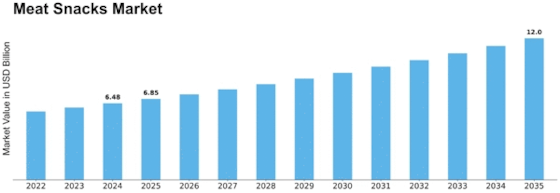

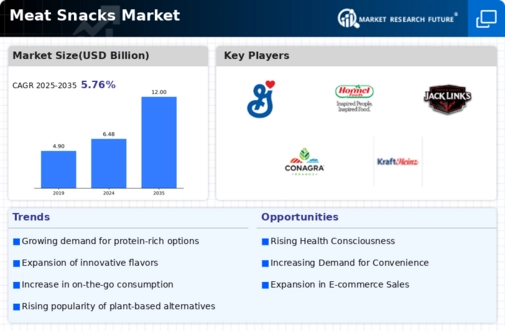
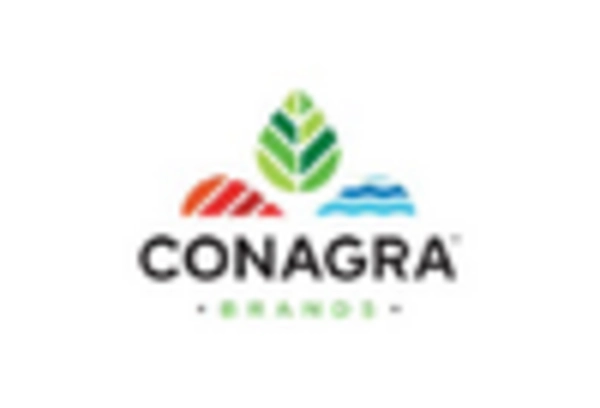
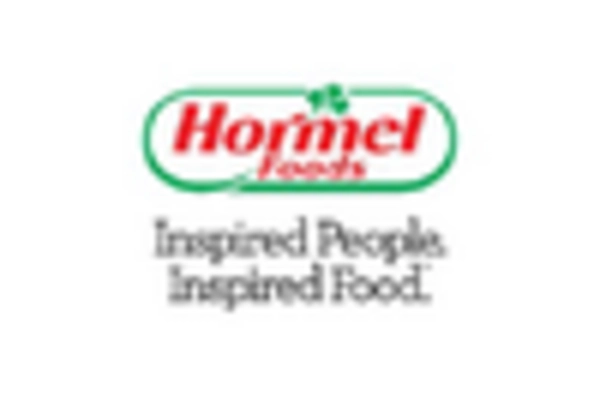
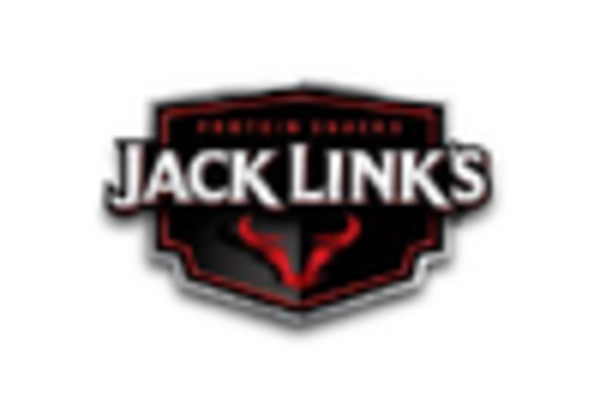
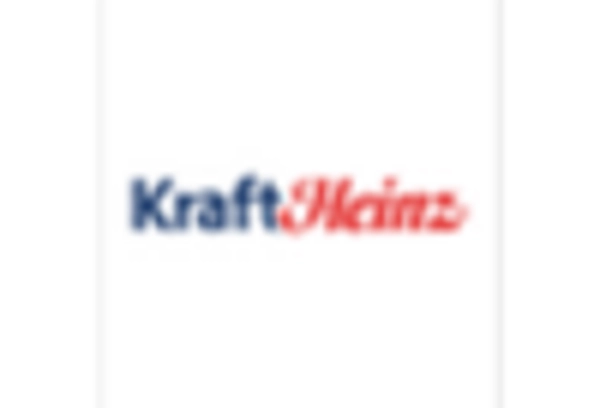
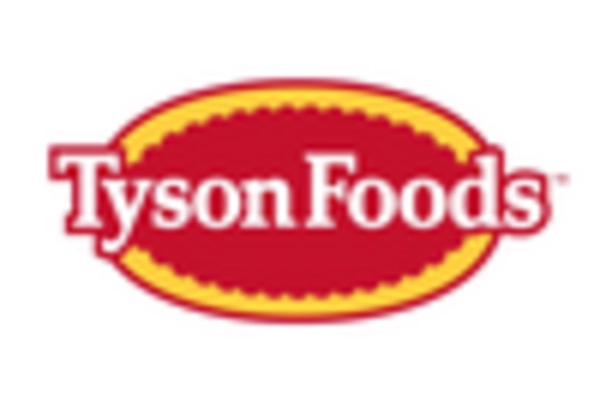
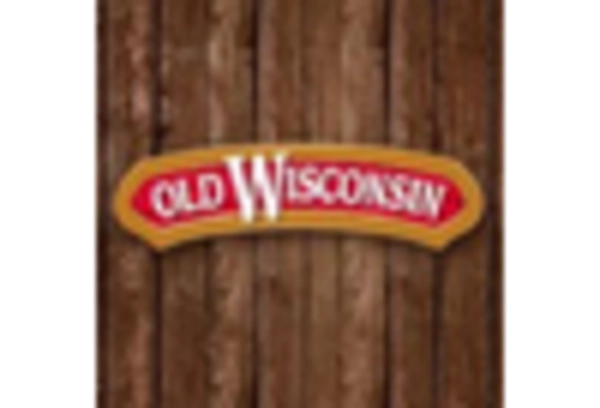









Leave a Comment